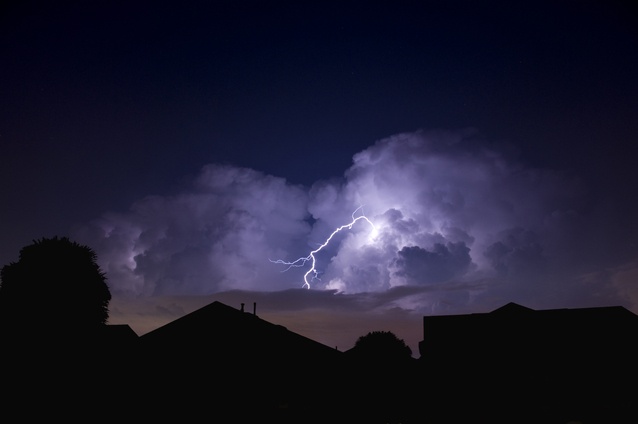How to Prepare for Spring Power Outages
Posted by Kristopher Schwind

Spring brings with it warmer temperatures, blooming flowers, and, on occasion, strong thunderstorms that can result in power outages. The best way to ensure your safety is to be completely prepared for anything a potential power outage could throw your way.
Here are some tips and tricks to help you make it through the first power outage of spring.
Light It Up
You don’t want to sit in the dark, and candlelight only goes so far. Make sure that you’ve got a powerful flashlight or battery-operated lantern in every room of your house, and let every member of your family know where to find it.
Check to see that the flashlights are functioning every six months, and change the batteries annually. Stock up on batteries of all sizes to ensure that your flashlights and other battery-operated tools don’t die when you need them most.
Stay Warm
While springtime is the beginning of soaring temperatures, it can definitely leave you chilled, particularly after the sun goes down. Be sure that you’ve got plenty of warm blankets in the house, and block drafts under doors and windows with a rolled up towel. Avoid opening the doors any more than necessary to avoid bringing chilly air into the house.
Food and Water
As a power outage could disrupt public water supply systems or prevent your well pump from functioning, it’s good to keep a supply of bottled water on hand in case of emergency. Store the water far from any potential contaminates or chemicals, and be sure that you’ve got enough for drinking as well as cooking and washing.
Purchase canned food and dry goods in case you’re without power for an extended period of time. Store your food supply in tightly-sealed containers, preferably metal, to avoid possible pest infestation and to extend the food’s shelf life. Mark the date of purchase on the box or can, and rotate the supply.
If you’re concerned about your perishables, turn your refrigerator and freezer down to their coldest settings when a power outage is imminent. This will help you extend the length of time your food will keep. Also, avoid opening your refrigerator and freezer during the outage. If the doors are tightly sealed, there’s a greater chance that your food will remain within the safe temperature zone and you won’t have to toss out everything you purchased during your last visit to the grocery store.
You should also purchase a thermometer that will tell you whether your food has warmed above 40 degrees Fahrenheit – if it has, it’s not safe for you to eat. You can use your grill or camping stove to cook anything that’s safe, but be sure that you do so outside. It’s dangerous to barbecue inside, as there can be a hazardous gathering of carbon monoxide indoors.
Communication
A battery-powered or solar-powered radio can be a lifesaver during a power outage. It will give you a lifeline to the outside world, and keep you informed about the course of the storm, particularly if you lose phone and internet connection due to the outage.
You can also purchase a portable battery charger (or two) to ensure that your smartphone or tablet is fully charged. As more people move away from landline telephones, it’s vital that you have a charged phone in the house in case of emergency.
If you do have internet service or a hearty data plan, this battery charger could be a lifesaver, particularly if you have young children who are in dire need of video entertainment.
Generator
If you really want to continue your daily life during a power outage without missing a beat, purchasing a generator is your best bet. If you’re concerned about the installation and maintenance required, we’d be happy to help you determine which generator would best suit your particular needs.
Spring power outages are inevitable, but your advance preparation can make them a minor inconvenience rather than a major catastrophe. Contact us today for a free generator assessment.
Kristopher Schwind is the proud owner of National Standby Repair.
 24/7 EMERGENCY GENERATOR SERVICE
24/7 EMERGENCY GENERATOR SERVICE REQUEST A QUOTE
REQUEST A QUOTE
 (914) 734-1400
(914) 734-1400